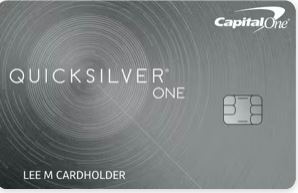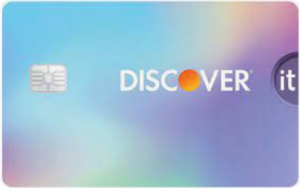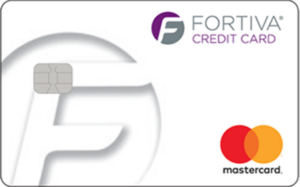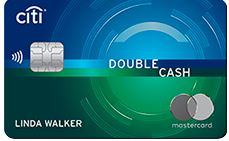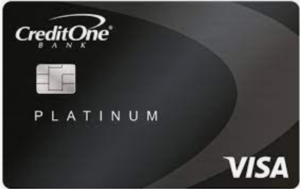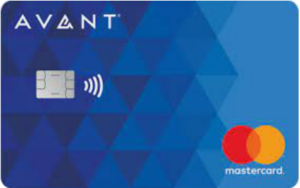Best Credit Cards for Fair and Average Credit
About Trevor
Trevor Mahoney is a financial services writer and content creator based out of Los Angeles, California. He holds a Bachelors of Science in Finance from Santa Clara University. In his free time, he enjoys hiking and lounging on the beach.
Read full bio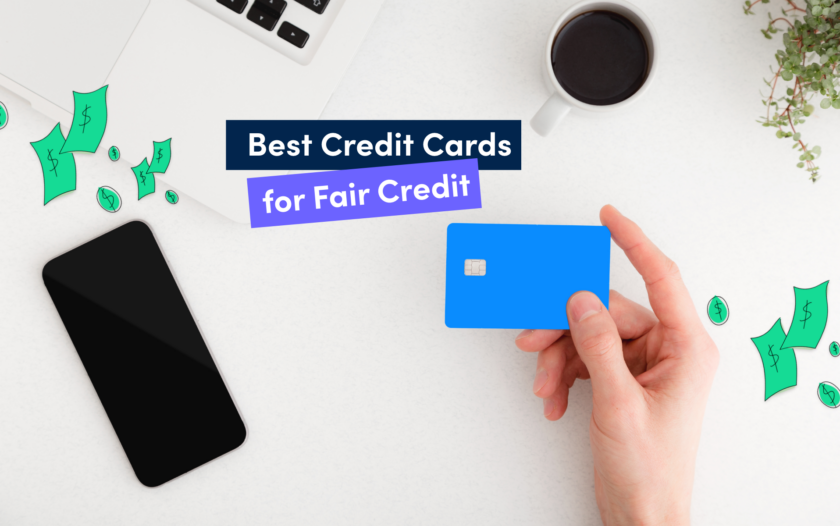
At a Glance
While having a strong credit score should always be the goal of credit card owners, everybody has been at a point in their life where they have a fair or average credit score only. Defined as being a score between 580 to 669, on average, a fair credit score can seem challenging to deal with when trying to apply for credit cards. Rest assured, however, that the best credit cards for average credit can still offer plenty of benefits to any cardholder.
In this article, you’ll learn:
Comparing the best credit cards for fair credit
For a quick glance at the best credit cards for fair credit, refer to the following table which outlines some of the leading cards in this category:
| Credit Card | Rewards Rate | Welcome Offer |
|---|---|---|
| Capital One QuicksilverOne Cash Rewards Credit Card Apply now |
Earn an unlimited 1.5% cash back on every purchase. | None. |
| Discover it Student Cash Back | Earn 5% cashback on everyday purchases every quarter such as Amazon.com, grocery stores, restaurants, and gas stations up to a quarterly maximum. 1% back on all other purchases. | None. |
| Fortiva Mastercard Credit Card | Earn 3% cash back rewards on gas, groceries, and utility bill payments. Earn 1% cash back on all other purchases. | None. |
| Indigo Mastercard | None. | None. |
| Citi Double Cash Card | 1% cash back as you buy and 1% cash back when those purchases are paid off. | None. |
| Credit One Bank Platinum Visa | Earn 1% cash back rewards on gas and grocery purchases, as well as mobile phone, internet, cable and satellite TV services. | None. |
| AvantCard | None. | None. |
A closer look at the best credit cards for those with fair credit score
An overarching view of the best credit cards for fair credit rating is one thing, but diving deeper into each is another. Take a look at each of the cards listed above broken down with more details so that you can determine which may be the best choice for your wallet.
We will have a deeper dive into each of the cards in the following format:
Capital One QuicksilverOne Cash Rewards Credit Card
Rewards Rate: Earn an unlimited 1.5% cash back on every purchase.
Annual fee: $39
Intro APR: None.
Regular APR: 29.99%
Signup bonus: None.
Our verdict: This card is the best credit card for a fair credit score when a person needs a daily driver card that works as a catch-all. With a blanket 1.5% cash back on all purchases and a low annual fee of $39, the cost to own this card is low and it comes with a high return on investment if you have many expenses in a month.
Pros:
- Low annual fee.
- Fair rewards earning of 1.5% on a blanket of all purchases.
Cons:
- No sign-up bonus.
- No intro APR.
- High Regular APR
Apply now: Capital One QuicksilverOne Cash Rewards Credit Card
Learn more: Capital One QuicksilverOne Card Review
Discover it Student Cash Back
Rewards Rate: Earn 5% cashback on everyday purchases every quarter such as Amazon.com, grocery stores, restaurants, and gas stations up to a quarterly maximum. 1% back on all other purchases.
Annual fee: None.
Intro APR: 0% Intro APR for 6 months.
Regular APR: 17.99% to 26.99% variable APR depending on credit worthiness.
Signup bonus: None.
Our verdict: The ideal credit card for students who have no credit, the Student Cash Back card doesn’t require any credit score to apply. Additionally, there is no annual fee on the card which means beginners to the world of credit can get started with this card without losing money. The low starting APR also means those who carry a balance will not pay as much interest as with other cards.
Pros:
- No credit score is required to apply
- No annual fee on the card
- Low starting APR
- Intro APR
Cons:
- No sign-up bonus
Apply now: Discover it Student Cash Back
Fortiva Mastercard Credit Card
Rewards Rate: Earn 3% cash back rewards on gas, groceries, and utility bill payments. Earn 1% cash back on all other purchases.
Annual fee: As low as $85
Intro APR: None.
Regular APR: 29.99% or 36% Fixed.
Signup bonus: None.
Our verdict: The Fortiva Mastercard Credit Card earns a place as one of the best credit cards to apply for with fair credit because of its rotating cash back categories. Therefore, it is best suited for those who have expenses which fall into this category. As a bonus, the extra 1% cash back on all purchases means you will still earn even if you don’t always spend in those categories.
Pros:
- High 3% cash back rewards earning rates on common spend categories.
- Low starting annual fee.
Cons:
- No intro APR and a high fixed APR.
- No sign-up bonus.
- Annual fee could increase depending on credit worthiness.
Apply now: Fortiva Mastercard Credit Card
Indigo Mastercard
Rewards Rate: None.
Annual fee: $75 the first year then $99 thereafter.
Intro APR: None.
Regular APR: 24.90%
Signup bonus: None.
Our verdict: The Indigo Mastercard is the definition of a starter credit card with its low annual fee and easy application process. There are no rewards earnings with this card which may be disappointing for some, but it’s an excellent opportunity to work on building credit for others.
Pros:
- Quick and easy application process.
- Low annual fee.
Cons:
- No rewards earnings.
- No sign-up bonus.
- No intro APR.
Apply now: Indigo Mastercard
Citi Double Cash Card
Rewards Rate: 1% cash back as you buy and 1% cash back when those purchases are paid off.
Annual fee: None.
Intro APR: 0% Intro APR for 18 months.
Regular APR: 18.99% to 28.99% based on credit worthiness.
Signup bonus: None.
Our verdict: The Citi Double Cash Card is a unique credit builder card due to its 2% cash back that is earned in two ways: 1% when you make a purchase and 1% when you pay off that purchase. This creates healthy credit habits making it an excellent starter card offered by a major brand. On top of this, there is no annual fee which makes it a low card to earn.
Pros:
- 2% broken up into 1% and 1% helps build strong credit habits.
- Intro APR lasts for an extremely long time.
- No annual fee.
Cons:
- No sign-up bonus.
- APR can get quite high for those with lower credit.
Apply now: Citi® Double Cash Card
Learn more: Citi Double Cash Card Review
Credit One Bank Platinum Visa
Rewards Rate: Earn 1% cash back rewards on gas and grocery purchases, as well as mobile phone, internet, cable, and satellite TV services.
Annual fee: $39.
Intro APR: None.
Regular APR: 28.74% variable rate.
Signup bonus: None.
Our verdict: The Credit One Bank Platinum Visa is an excellent starter choice for anyone looking to establish themselves in the world of credit. With a modest 1% cash back earning on specific categories, a person doesn’t need to worry about not getting anything for their expenses. This is one of the best-unsecured credit cards for fair credit and should be considered by all those looking to build their scores.
Pros:
- Low annual fee.
- Cash back card.
Cons:
- Limited rewards categories.
- No sign-up bonus.
- No intro APR.
Apply now: Credit One Bank Platinum Visa
AvantCard
Rewards Rate: None.
Annual fee: $39
Intro APR: None.
Regular APR: 30.99%
Signup bonus: None.
Our verdict: Finally, the AvantCard is a unique starter card for those seeking to improve their credit score. The reason this card is one of the best credit cards to apply for with fair credit is due to the bonus perks it offers. The company will automatically consider you for credit increases if you develop healthy credit habits, and it will also give you access to a banking platform so that you can get comfortable with your spending habits.
Pros:
- Company will review your credit and provide line increases.
- $0 foreign transaction fees.
- Quick and easy application process.
- Access to an online banking platform.
Cons:
- The card has an annual fee.
- There is no sign-up bonus.
- There is no intro APR and the regular APR is quite high.
Apply now: AvantCard
How to choose a credit card for fair credit?
When a person only has a fair credit score, they may feel as if their choice of credit cards is limited. However, this couldn’t be further from the truth as evident by all of the above options. Going further, it can be beneficial to understand a number of tips that can help you narrow down the best choice:
- Evaluate your credit score and allow that to narrow the options in front of you.
- Think about what APR rate you can afford if you are carrying over a balance.
- Consider if there are any welcome bonus offers that you would make the most of.
- Look at the extra benefits that the card offers, such as cell phone protection, lost luggage reimbursements.
How to qualify for a fair credit card?
Qualifying for a fair credit card will require meeting all of the minimum requirements listed for that card, but the most important will be meeting the credit score. Other beneficial tips that can help in the approval process include ensuring your debt-to-income ratio is satisfactory, all your other debt is currently paid off, and that you have a strong source of income coming in.
How to make the most of your credit card?
Depending on the type of card that a person adds into their wallet, there are a variety of ways to make the most of the card. For example, if you have the best credit cards for fair credit that offer multiple cash-back categories, consider dividing up your expenditures onto different cards to maximize those rewards. Alternatively, if you have a “catch-all” type of credit card, simply throw your expenses onto that card.
Methodology
The methodology used to calculate the best cards for fair credit relied on a number of factors, with the most prominent of those being:
- The required credit score to apply successfully for the card.
- The additional benefits offered by the card beyond rewards.
- The rewards rate of the card, if applicable.
- Overall difficulty in securing the credit card with fair credit.
- The history of the card issuer itself.
- Any potential costs associated with owning the credit card.
The product information provided here is based on research conducted up to a specific date and may have changed. For the latest and most accurate information, we recommend you to visit the respective card’s website before proceeding.

